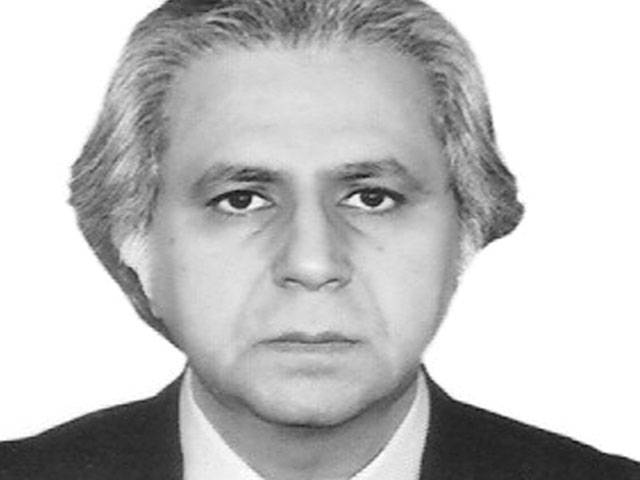We now have the Shehbaz Sharif government claiming that an imminent default has been averted, the IMF is almost on board, friendly donor countries are once again turning sympathetic and the economy has finally been put in the right direction! While reserving any comments on the middle two claims, the first and last are statements that one has heard numerous times in the previous 4 to 5 decades, but still every 5 to 7 years we end up finding ourselves at the edge of a precipice! Let’s just briefly compare some strategic differences between ourselves and the other two South Asian economies that are considered modern-day success stories despite supporting a large population:
* Interest Rate: Pakistan—13.75%, India—4.90% and Bangladesh 4.75%.
* Corporate Tax Slabs: Pakistan—38% with the new proposed addition, India—15% (for small companies under 115BAB with most at 25% with a turnover of up to INR 5 billion and thereafter 30% and Bangladesh—27.50% for un-listed and 20% listed companies (having reduced 5% recently to promote investment and corporatization).
* GST: Pakistan—17%, India—18% and Bangladesh—15%. However, all exports in India and Bangladesh are zero-rated, whereas, this is not the case with any export sector in Pakistan.
* Corruption, Taxes and Compliance (IMF) – Primarily relating to the much-needed FBR reforms to encourage willingness amongst people to enter the tax net (faring in comparison with the developed economies): Pakistan: 48.50%, India: 95.20% and Bangladesh: 92.20%.
* Fiscal Deficit Targets 2022-23 as a percentage of GDP: Pakistan—4.90%, India—6.90% and Bangladesh—5.50%. Why are we aiming so high and that too at the expense of economic activity? It would have been another thing if the government would have had to cut its size to achieve it!
* Real tax rate on exports: Pakistan was 1% at source, which effectively translates to between 10 to 15% as total net tax and now with this proposed increase will effectively be between 19 to 24%. In India it is capped at 12% and in Bangladesh it is capped at 10%.
* Share of Domestic Credit as a percentage of GDP: Pakistan—17.20%, India—54.80% and Bangladesh—50%. Perhaps the key difference as capital in Pakistan is mostly in inefficient hands. The Fiscal Budget 2022-23 further exacerbates this issue whereby given the announcements more capital will flow out from the private sector hands and into the public sector hands.
* Share of indirect taxes in the total annual tax collection: Pakistan—61%, India—31% and Bangladesh—19.80%.
* The above in-turn leads to another very important indicator of the economy, the share of manufacturing in the total economy: Pakistan—12% (decreasing), India—a16.50% (stable) and Bangladesh—Almost 20% (rapidly increasing).
* Further leading to another important indicator: Non-re-exportable imports as a percentage of GDP – Pakistan: 19%, India—13% and Bangladesh—8%.
Net Results:
* Currency: Pakistan—210:1$, India—78:1$ and Bangladesh—92:1$.
* GDP Growth Rate 2022: Pakistan—3% (at best), India—8.70% and Bangladesh—7.50%.
* Foreign Exchange Reserves in billions of dollars: Pakistan—7, India—600 and Bangladesh—46.
Inflation: Pakistan—13.80% (however, in reality, it is much more), India—7.50% and Bangladesh—6.40%.
The trouble is that unless we address the above underlying anomalies in economic management, our recurring issues will not go away and the economic traps relating to debt, unemployment and poverty will simply deepen further.
* Interest Rate: Pakistan—13.75%, India—4.90% and Bangladesh 4.75%.
* Corporate Tax Slabs: Pakistan—38% with the new proposed addition, India—15% (for small companies under 115BAB with most at 25% with a turnover of up to INR 5 billion and thereafter 30% and Bangladesh—27.50% for un-listed and 20% listed companies (having reduced 5% recently to promote investment and corporatization).
* GST: Pakistan—17%, India—18% and Bangladesh—15%. However, all exports in India and Bangladesh are zero-rated, whereas, this is not the case with any export sector in Pakistan.
* Corruption, Taxes and Compliance (IMF) – Primarily relating to the much-needed FBR reforms to encourage willingness amongst people to enter the tax net (faring in comparison with the developed economies): Pakistan: 48.50%, India: 95.20% and Bangladesh: 92.20%.
* Fiscal Deficit Targets 2022-23 as a percentage of GDP: Pakistan—4.90%, India—6.90% and Bangladesh—5.50%. Why are we aiming so high and that too at the expense of economic activity? It would have been another thing if the government would have had to cut its size to achieve it!
* Real tax rate on exports: Pakistan was 1% at source, which effectively translates to between 10 to 15% as total net tax and now with this proposed increase will effectively be between 19 to 24%. In India it is capped at 12% and in Bangladesh it is capped at 10%.
* Share of Domestic Credit as a percentage of GDP: Pakistan—17.20%, India—54.80% and Bangladesh—50%. Perhaps the key difference as capital in Pakistan is mostly in inefficient hands. The Fiscal Budget 2022-23 further exacerbates this issue whereby given the announcements more capital will flow out from the private sector hands and into the public sector hands.
* Share of indirect taxes in the total annual tax collection: Pakistan—61%, India—31% and Bangladesh—19.80%.
* The above in-turn leads to another very important indicator of the economy, the share of manufacturing in the total economy: Pakistan—12% (decreasing), India—a16.50% (stable) and Bangladesh—Almost 20% (rapidly increasing).
* Further leading to another important indicator: Non-re-exportable imports as a percentage of GDP – Pakistan: 19%, India—13% and Bangladesh—8%.
Net Results:
* Currency: Pakistan—210:1$, India—78:1$ and Bangladesh—92:1$.
* GDP Growth Rate 2022: Pakistan—3% (at best), India—8.70% and Bangladesh—7.50%.
* Foreign Exchange Reserves in billions of dollars: Pakistan—7, India—600 and Bangladesh—46.
Inflation: Pakistan—13.80% (however, in reality, it is much more), India—7.50% and Bangladesh—6.40%.
The trouble is that unless we address the above underlying anomalies in economic management, our recurring issues will not go away and the economic traps relating to debt, unemployment and poverty will simply deepen further.






